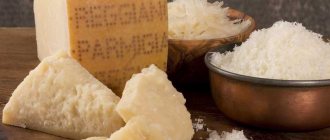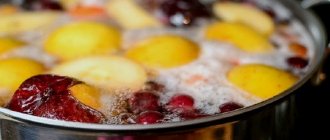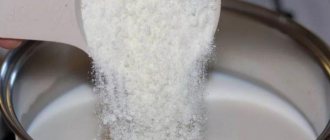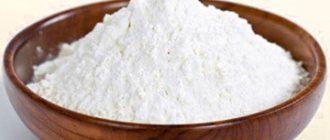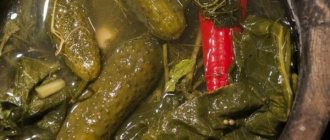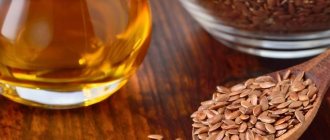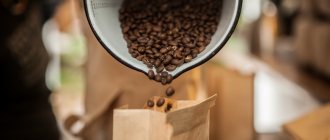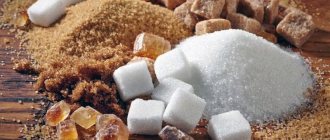Delicious and healthy dried fruits will be a great way to fill your body with useful substances during winter and early spring. To do this, they must be properly dried and stored. Of course, the easiest way is to buy dried fruits in a store or market, but your harvest will always provide more nutrients and taste. Even after fresh fruits have acquired a wrinkled appearance, they are ideally used in the preparation of compotes and will complement various dishes. There are certain subtleties on how to store dried fruits at home that are important to remember.
Storage period
Like any product of organic origin, dried fruits have an expiration date and certain storage conditions. We can safely say that even the very quality of everyone’s favorite delicacy is determined by its storage conditions.
These terms guarantee the preservation of all consumer properties and indicators of products established by standards, subject to compliance with storage rules for a certain period of time.
The difference between the terms is that the shelf life is the time interval during which a given product can be used, and the shelf life is considered to be the time during which the product retains all its original properties.
The shelf life of products is established from the date of production by the manufacturer.
According to Resolution No. 720 of June 16, 1997: “The service life (shelf life) of the product must be established by the manufacturer in accordance with the legislation on consumer protection, other legal acts, mandatory requirements of state standards or other mandatory rules and contained in the information about the product provided to the buyer."
The benefits of dried fruits
Modern housewives prefer freezing as a way to prepare fruit for the winter, considering drying to be a useless product, and they are very mistaken. Even in the old days, through drying, fruits were prepared in reserve to ensure the ability to replenish the deficiency of vitamins and microelements in the body in winter and spring, when a person critically needs them. According to researchers, drying contains significantly more vitamins than frozen products, which makes this method of long-term preservation of fruits and berries a priority.
The benefits of including dried fruits in the diet are undeniable:
- Dried fruits help improve brain function, increase mental activity and assimilate new information.
- A complex of vitamins and minerals, which remains almost in full after drying, with the exception of vitamin C, which is difficult to preserve, when included in the diet every day, allows you to increase and maintain a person’s immunity in good shape.
- The composition includes protein as an important component for the health of the human body.
- The ingredients that make up dried fruits help accelerate regeneration processes in the body, which has a positive effect on the condition of the skin, hair and nails.
- Dried fruits have a positive effect on metabolic processes and promote the active elimination of toxins, which has a positive effect on a person’s overall well-being.
A surge of vivacity, strength and energy are feelings that are activated against the backdrop of a regular snack of dried fruits, and for this alone they are worth appreciating, and if you add the described, research-based facts of the positive effect of dried fruit “semi-finished products” on the body, the “hobby” becomes understandable "of our ancestors with such products. In order for dried fruits to be suitable for consumption over a long period and truly bring benefits, it is worth figuring out how to prepare them for saving, what and where to store them: the final result directly depends on the correctness of the manipulations.
Marking according to GOST
All containers in which dried fruits are packaged are marked with indelible paint (an inscription that can be replaced with a colorful label) indicating:
- name of the manufacturer;
- the product's name;
- net mass, g;
- production dates;
- varieties;
- designations of technical documentation;
- expiration date of nutritional and energy value in accordance with the application.
Transport marking - in accordance with GOST 14192 with the application of the handling sign “Keep away from moisture” must contain the inscription: “Store in a dry, cool, disinfected room.”
A few more tips for preserving dried fruits
Cool pantries are suitable for storing dried fruit. Remove dried fruits from areas that are warm, humid, and sunny. These factors negatively affect dry products.
GOST 21713-76 Fresh pears of late ripening. Technical specifications GOST 21715-2013 Fresh quince. Technical specifications GOST 21832-76 Fresh apricots. Specifications GOST 21833-76 Fresh peaches.
This standard applies to dried fruits: pome and stone fruits or mixtures thereof, made from fresh fruits or fruit semi-finished products, appropriately prepared and packaged in transport or consumer packaging, intended for further industrial processing or for direct consumption (hereinafter referred to as dried fruits) .
Every autumn, compotes and jams are prepared from the harvest and the berries are frozen. This allows you to enjoy fresh fruits all year round. However, during heat treatment and freezing, some qualities of the products are violated, and the vitamin value decreases. That is why you should give preference to the dry method of harvesting fruits.
What does it depend on?
In order for dried fruits to remain fresh for as long as possible, it is always worth taking care of the storage conditions of this product , because all sorts of shortcomings can directly affect even the shelf life or storage of the product.
Materials for packaging dried fruits must be clean, durable, free of foreign odors, dry and free from pests, because these facts directly affect the quality of the fruit.
The composition of the product is important ; unfortunately, the fruits are subjected to careful chemical processing in order to make them more attractive to buyers. Most of the dried fruits that we purchase in stores are obtained through industrial drying, which is why they lose their color and even their smell.
Manufacturers use dyes, additional additives (such as E220), glycerin, vegetable oils, and sometimes burner processing is used for accelerated drying, which gives the fruit a gasoline taste. All this in one way or another affects the shelf life of the product, sometimes for the worse.
Some simple tips
To better preserve the fruits, you should use some fairly easy life hacks from experienced housewives:
- Salt or mint will help ensure the absence of moisture. Dried leaves are added directly to the packaging with dried fruits, and an open salt shaker is placed close to the location of the packaged products. In this case, you won’t have to think about how to process dried apricots for long-term storage.
- Inventory will have to be checked periodically. But don’t panic and throw away the harvested crops if bugs suddenly appear in them. In this case, processing the reserves in the oven or dryer will help. Emergency freezing of dried fruits at a temperature no higher than -15 degrees would also be a good option. In this case, subsequent additional drying will still be required. To prevent re-infection, it is necessary to treat the container and shelf with acetic acid. This will help destroy insect larvae. If the pests have managed to actively multiply, then there is only one way out: immediate destruction of supplies.
- Regular ventilation will also be important. For closed containers, it is recommended to do this once a week, and it is advisable to completely empty the supplies and ventilate them completely.
Simple helpers
To preserve the dried harvest, simple helpers will come in handy, which are sure to be found in every home. In addition to the rather exotic mint, which protects against mold and insects, they will include:
- Vinegar. You can use it for washing bags, wiping boxes, and washing shelves. The not-so-pleasant smell evaporates quite quickly.
- Laundry soap. This fragrant product will reliably repel insects and prevent the appearance of fungus. True, it is not recommended to leave it next to open containers: dried fruits in cloth and paper packaging will quickly absorb a pungent odor, which you will no longer be able to get rid of.
Before purchasing a product on retail shelves or in stores, you should carefully inspect it for insects and debris. For a beautiful appearance, suppliers wipe their goods and treat dried fruits for long-term storage with various chemical compounds. To avoid the entry of such substances into the body, dry fruit can be stored at home using traditional and proven methods.
Rate this post
How to determine freshness when purchasing and at home?
First of all, many people try to determine the freshness of a product by its appearance. Manufacturers are trying in every possible way to attract our attention with the shining surface and bright color of dried fruits, sometimes even resorting to treating the fruits with various substances for a more intense aroma. Unfortunately, quite often all this is not a guarantee of good quality.
In order not to make a mistake, you should choose dried fruits with a matte surface, because this is an indicator that the product is natural, because due to the absence of most of the moisture, the fruits cannot shine.
Most often, naturally dried dried fruits do not have a presentable appearance, but they are the ones that are good for health.
For example:
- The bright orange color of dried apricots indicates that they have been exposed to chemical dyes. Dried under natural conditions, it has a dark shade, sometimes even brown, with a gray coating.
- Raisins, if all the rules of drying and storage are followed, should be brown or black (depending on the grape variety).
- The brown tint of prunes indicates that they have been in boiling water, therefore, they have lost some of their beneficial properties, and the shiny surface only indicates treatment with glycerin or wax.
As for those cases when you purchased dried fruits of inadequate quality, you can almost always return them (if the defect did not occur through your fault).
GENERAL CHARACTERISTICS
How to choose dried fruits suitable for long-term storage
First of all, we must clarify that dried fruits are fruits from which 75–85% of the moisture has been removed by natural or forced means. Drying methods are very important for the shelf life of the product, and most importantly, for its useful components.
The most correct way of drying is to naturally dry the fruit in the shade (the water evaporates gradually, and the slowly drying pulp, which is not subject to sudden heat shock, retains vitamins as much as possible).
Drying in the sun has both pros and cons: fruits dry faster and release more moisture, but due to exposure to direct sunlight they may lose some of their beneficial properties (for example, vitamins A and C).
But, undoubtedly, the most unhealthy method is forced drying using high temperatures (especially using burners, lamps, ovens running on gas, gasoline or diesel fuel). Due to shockingly high temperatures for fruits, up to 55-60% of healing microelements are “burned out” in them, and chemical fragrances of fuels and lubricants are quite capable of ruining the pleasant smell and taste of dried fruits.
In industrial production, washing and cleaning machines, dehydrators, belt dryers and other devices are used in the process of drying fruits.
Dried fruit production line, photo:
How to determine how fruit is dried?
Well-prepared drying is truly a storehouse of beneficial microelements and vitamins, which, if properly preserved, retain their properties for many months. But the table below will help determine the quality of the fruit.
Table 1
| Product name | Characteristics of a product dried naturally without the use of chemicals, etc. |
| Raisins black | Matte blue-black, medium hard, sweet, no off-flavors |
| Raisin quiche-mish | Matte brown, medium firm, very sweet, no off-flavors |
| Dried apricots | Grayish, brown, medium soft, sweet and sour, without foreign flavors |
| Dried apricots | Gray, brown, medium soft, sweet and sour, no foreign flavors |
| Prunes | Matte black, firm, medium sweet, no foreign flavors (including smoked flavors) |
| Apples, pears | Yellow-brown matte, flexible, medium sweet, no off-flavors |
| Bananas | Dark brown, matte, medium soft, very sweet, no off-flavors |
| Figs | Grey, matte beige, medium soft, very sweet, without foreign flavors (a sweet white coating is allowed - this is glucose released during the drying process) |
| Cranberry | Dark burgundy, medium hard, sour with slight bitterness, no foreign flavors |
| Cherry | Burgundy-brown, matte, firm, sweet and sour, without foreign flavors |
An interesting fact is that the varying degrees of hardness, elasticity or softness of finished dried fruits are influenced by the hygroscopicity of the pulp, as well as the presence in it of a very useful organic compound - dietary fiber, which can reduce cholesterol levels, help with gastrointestinal problems, and balance blood sugar levels and have a positive effect on hemoglobin. The more dietary fiber there is in drying, the softer and more flexible it is.
How to identify chemical additives used when drying fruits
We often come across very attractive-looking dried fruit on the shelves: amber, seductively shiny, fragrant and very sweet - but few people know that behind this “beauty” lies almost the entire periodic table. And in order not to buy a mixture poisoned by chemicals instead of a healthy product, remember some very important parameters:
- The bright yellow or amber color is obtained by soaking in food dyes from the E line, which include, for example, toxic alkanine or allergenic tartrazine. Without special reagents, you won’t be able to tell whether dried apricots or quiche are colored with beneficial curcumin or dangerous riboflavin phosphate, so pay your attention to the nondescript, dull fruits - they will be the most useful.
- Carefully examine a fig or any other fruit that has a fairly rough skin: if the dried fruit has deep cracks, then it was previously soaked in caustic soda (penetrating inside, the soda destroys the dense shell, it cracks, and the process of removing moisture is accelerated).
- A beautiful, shiny, oily-to-the-touch gloss on dried fruit is another dishonest method of attracting customers. Drying itself cannot shine due to the minimal amount of moisture in it, so increase its attractiveness by lubricating it with glycerin or hydrogenated soybean oil, which contains extremely harmful trans fats.
- “Smoked” prunes or dried apricots? In no case!!! Most often, they are smoked with synthetic “liquid smoke”, the smell and taste of which is determined by carcinogens that are hazardous to health.
Very important : please do not pay attention to this fake “beauty”: truly healthy dried fruits are inconspicuous, dull, never shine and do not have a bright aroma. Buy them - if stored properly, they will still contain vitamins after three years.
This is what healthy ugly dried fruits look like
At what temperature is it better to store dried fruits?
Shelf life
table 2
| Product name | 2° - 10°C (optimal storage temperature) | 10° - 17°C (permissible temperature) | 18° - 24°С (maximum permissible) | from 0° to -20°С (freezer) |
| Raisins black | up to 18 months | up to 1 year | up to 6 months | practically unlimited time provided that a constant temperature is maintained. (Divide the drying into small portions and defrost only the amount needed) |
| Raisin quiche-mish | up to 18 months | up to 1 year | up to 6 months | |
| Dried apricots | up to 1 year | up to 6 months | up to 3 months | |
| Dried apricots | up to 1 year | up to 6 months | up to 3 months | |
| Prunes | up to 1 year | up to 6 months | up to 3 months | |
| Apples, pears | up to 18 months | up to 1 year | up to 6 months | |
| Bananas | up to 10 months | up to 6 months | up to 3 months | |
| Figs | up to 10 months | up to 6 months | up to 3 months | |
| Cranberry | up to 18 months | up to 1 year | up to 10 months | |
| Cherry | up to 18 months | up to 1 year | up to 10 months | |
| Rose hip | up to 3 years | up to 18 months | up to 1 year | |
| Date fruit | up to 10 months | up to 6 months | up to 3 months |
Air humidity in storage areas should be no more than 65–75%.
It is clear from the table that dried fruits with low humidity (from 15 to 18%) and low sucrose content compared to other fruits have a longer shelf life, since it is the combination of water and sugar that creates a breeding ground for the appearance of mold and pathogens that lead to to complete unsuitability of the product.
Elevated temperatures (over 17 °C) also negatively affect the safety of drying, significantly accelerating chemical processes at the enzymatic level, which leads to the appearance of mold and other pathogens.
Very important: dried fruits, even slightly contaminated with mold, should not be eaten!!! Aflatoxins, which have carcinogenic properties and are contained in any type of mold, can accumulate in human internal organs, gradually suppressing natural immunity and causing dangerous diseases, including oncology.
Rules for keeping at home
- Dried fruits should be stored in a glass, closed container. If you store fruits in a vacuum, this will prevent the appearance of harmful microorganisms.
- There is also a way to store fruits in thick cotton bags, pre-soaked in salt water. The fabric prevents mold by absorbing excess moisture, and the salt repels pests.
- Storing dried fruits in plastic bags and plastic containers is not the best solution, because the product gets damp, becomes moldy and is a good place for insects.
- It is those fruits that are located in damp and warm places that are susceptible to destruction. The storage location of the product should be well ventilated and not exposed to direct sunlight.
- When frozen, dried fruits lose some of their beneficial substances, but if there are no other storage methods left, you need to follow certain rules:
- Fruits should be placed in small batches in food containers.
- Dried fruits must be divided into portions, since re-freezing the product is not permissible.
- Thawing should only be done at room temperature; dry fruits should not be defrosted in boiling water, as they will lose many of their properties.
Creating conditions for storing dried fruits
Proper storage of dried fruit worries many zealous housewives. There are quite a few options for solving this issue, but they all boil down to one thing: eliminating moisture and heat.
In the fight against the first negative factor, refrigerators, cellars and balconies will help, providing a temperature no higher than 10 degrees.
Properly selected packaging will handle the second point.
Important. Different varieties of dried fruits are stored in different containers, even if they will later be used together in a compote or pie. This will help extend the shelf life of dried fruits and avoid troubles such as mold. If for some reason the dried fruits must lie in one container, it is necessary to additionally dry the already prepared supplies until a uniform moisture level is obtained.
Can I eat it after the specified time?
If the dry fruits look natural in appearance: there are no pests, no stains or moisture, the color and smell are unchanged, then you can use such a product, but you need to evaluate the possible risk, because the expiration dates are indicated by the manufacturer for a reason.
Dried fruits are one of the healthiest products in our lives , but they should be consumed sparingly and wisely, not forgetting about storage conditions and quality. Before use, they should be treated with boiling water or soaked in water, and then rinsed. Be careful when choosing fruits and take care of your health.
If you find an error, please select a piece of text and press Ctrl+Enter.
Summarizing
Self-harvesting dried fruits is extremely popular; it allows you to stock up on healthy, immune-strengthening natural fortified products for the whole year, and knowledge of the conditions and rules of conservation will ensure a long shelf life for them.
If dried fruits are purchased products, it is not rational to purchase goods with a huge supply. Drying is a capricious product that requires special conditions for preservation, so purchasing dried fruits in portions will avoid the need to constantly monitor their suitability, check for spoilage and other related hassles.
Can dried fruits be stored in the refrigerator?
The refrigerator is the best place to store prunes. The organization of this procedure is as follows: the dryer is wrapped in food foil, closed and 5-6 holes are made along the entire surface of the package with a toothpick. The best place to store food in the refrigerator is the door. The required temperature and ventilation are created there when opened. You can also put prunes in a vegetable basket.
If you need long-term drying storage, choose the freezer. To store prunes, arm yourself with cling film, in which you need to carefully wrap the product so that everything in the freezer does not smell of it. The film can be replaced with a plastic container. Frozen prunes do not lose their valuable properties and incredible taste.
Rules for storing prunes indoors
Among other types of dried fruits, prunes are the most undemanding in terms of storage conditions. The main thing is that the room is cool, dark and has a low humidity level. There are other recommendations, which we will discuss below.
Choosing packaging and storage location
In the case of prunes, the storage container can be made of any material. Dried plums have such a strong aroma that other smells are unable to overcome it. You only need to worry about nearby products so that they do not absorb the aroma of prunes.
Household chemicals can negatively affect the smell. In this regard, it is not recommended to leave the product near such products even for a couple of minutes.
Packaging for prunes must be airtight. A good choice is a ceramic container with a tight lid, a metal container that can be closed, or a regular glass jar with a silicone lid.
If prunes are placed in a separate box or cabinet, you can use the following packaging:
- plastic bag with zip fastener;
- cardboard box;
- birch bark or wooden basket;
- bag made of linen or canvas.
If you choose containers made of durable materials to store dried plums, then before filling they need to be washed with soda, doused with boiling water and dried. If the container is made of fragile material, it should be wiped with a salt solution and dried. Next, fill it with dry fruits.
Rules for preparing and using saline solution:
- Dissolve half a kilogram of salt in a liter of drinking water. Extra or iodized salt will not work.
- Thoroughly coat the surfaces of the vessel with this solution.
- If the containers are made of fabric, they are soaked in the solution for a couple of minutes and then dried.
A large amount of drying material can be stored in the pantry. If there is nothing else in the room except prunes, then you do not need to place the prunes in a container, but you can simply string them on threads and hang them.
To prevent prunes from spoiling, the created “beads” are dipped in a saline or soda solution and then dried. Before eating, you just need to wash the prunes and that’s it. To prepare such a solution, 1 tbsp is enough. l. soda or 2 tbsp. l. Dilute salts in a liter of purified water. By the way, treatment with the solution will not affect the taste of the product in any way, however, it will protect the prunes from mold formation.
